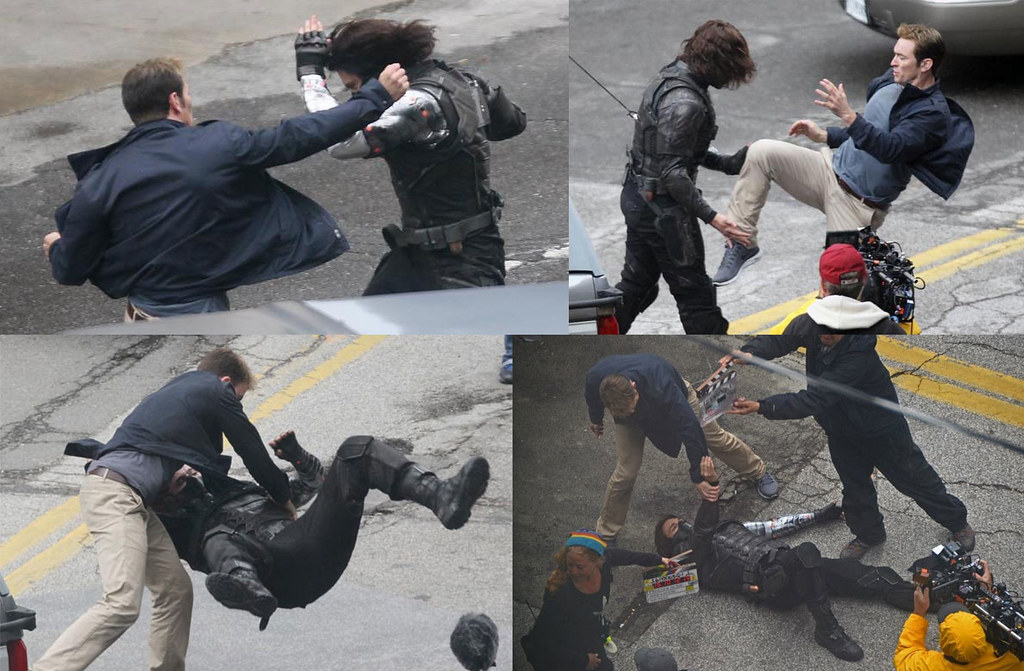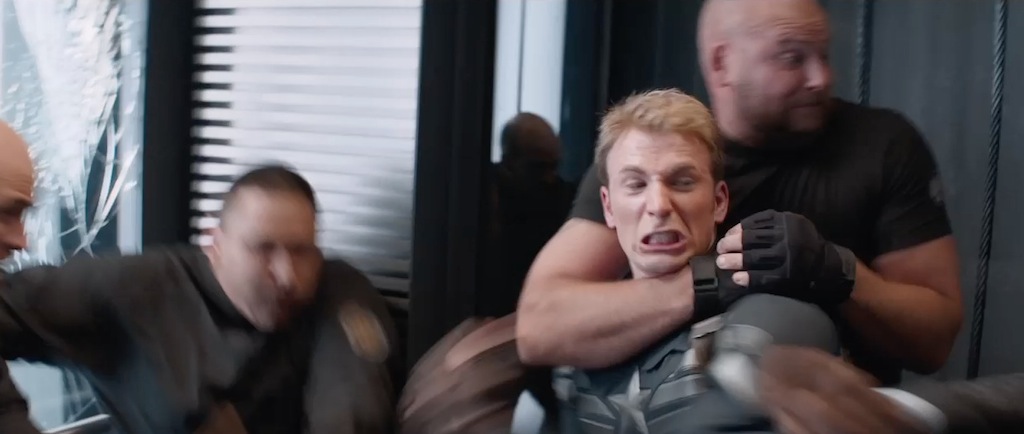Too scrawny and frail to enlist in the U.S. Military during World War II, Steve Rogers volunteered to receive the experimental Super-Soldier Serum. Enhanced to the pinnacle of human physical potential he became Captain America.
With the recent release of the new 'Captain America: Winter Soldier' movie, there has been a lot of buzz around the Cap's fighting skills and the combat disciplines he is trained in.
Steve Rogers was trained extensively in multiple forms of combat including martial arts. Thanks to the Super Soldier Serum, he was able skip the physical conditioning and flexibility training. Although a few of them have been identified, not every discipline he was trained in is known.
The only revealed disciplines are American Boxing, Judo, Aikido, and Jujutsu, but he has utilized various different techniques and methods from multiple others fighting styles.
Among these are various Kung fu styles such as Tai-chi-chuan, Wing Chun, various Shaolin arm methods which he incorporates for his shield, Chin-Na, and northern kicking methods, Capoeira (acrobatic brazilian martial arts), Muay Thai, Karate, Eskrima, and hand techniques used in Ninjutsu.
While there are potential other forms which may play a role, many of them were invented after WW2 or during it when Rogers was engaging the enemy axis. He generally uses many different techniques often seen today in modern kickboxing, wushu, and mixed martial arts.
While eastern martial arts were not well recognized during the late 1930s and early 1940s; (many of them were regarded as flashy, and even useless movements), he may have possibly learned different techniques from fighting other persons who used them.
Two of his best students Bucky and Hawkeye have been seen using at least one sophisticated hand technique from Ninjutsu that was meant for sensitive points of the body, confirming that Captain Rogers taught it to them giving credence to the idea that he may have learned it after confronting Hand Ninjas before the United States officially joined the war.
Captain America incorporates every area of combat in his methods. He excels in punching, kicking, elbowing, kneeing, headbutting, hand techniques and pressure point fighting, grappling, blocking, parrying, trapping, joint locking and manipulating, restraining, disarming, ground fighting, and tricking.
He is extremely fluid when fighting enabling himself to adapt to any change in the environment or the physical status of him or his opponent. He is able to shift from stand up combat to ground fighting, and even aerial combat due to his mastery over acrobatics. (Chris Evans actually trained in gymnastics to prepare for his role in the 'Winter Soldier'). He has turned his falls from being hit by an opponent into acrobatic kicks and punches by using the momentum from the assault and "flowing" with it.
Tricking also plays an especially large role in his form often using many of those techniques against multiple opponents to create space and confusion, as well as aerial combat (he initially nicknamed it combat gymnastics since there was originally no official name for it).
The Cap does not generally use any weapons other than his shield, but his training in Aikido, Jujutsu, overall combat experience, and understanding of hand-to-hand combat techniques enables him to wield all forms of weaponry with great proficiency.
He is also well aware the existence of Chi (Ki, or internal energy), and uses it for both combat and health reasons.
Rogers uses any advantage he can find against his opponents, especially if they are physically larger than him, he would assault the larger and easier to hit pressure points. He has often defeated opponents much bigger and stronger this way.
He trains routinely in simulated combat sometimes blindfolded, in dark and pitch black areas, and even in slippery and uneven terrains to the event of ever having fight in them.
Although peak human, he isn't always the strongest fighter, not Hulk strong, or even fast like Spiderman, but what he does have is a lifetime of combat knowledge, indomitable will, and unrelenting stamina. Those are his defining characteristics. He routinely fights guys who are on paper, miles ahead of him, but he outfights them just the same.
Cap isn't about straight out-punching guys. He knows their weak spots and hits them there, this new skill reflects that perfectly.
In the pirate ship scenes from the 'Winter Soldier', Cap employs more modern techniques, by taking a knife from one pirate and throws it through the hand of another, because the second pirate is reaching for the alarm and it’s the only way he can stop him. Using your assailant’s weapon against him is a main tenant of Krav Maga. Captain America has a lot more tools at his disposal to turn him into a modern warrior.
Stunt coordinator Thomas Robinson Harper explains the styles of fighting used in the ship sequence and the film.
“The fighting techniques that we used in this are a mixture of Parkour, Brazilian Ju Jitzu, karate and boxing, so it’s truly a mixed martial arts that we had Chris training for because part of bringing the character into modern day is that Steve Rogers has studied and mastered these modern fighting styles and techniques"
So in essence, Cap can move, using his shield, multiple martial art forms, and acrobatics in concert. He is a truly powerful and devastating combatant.

















